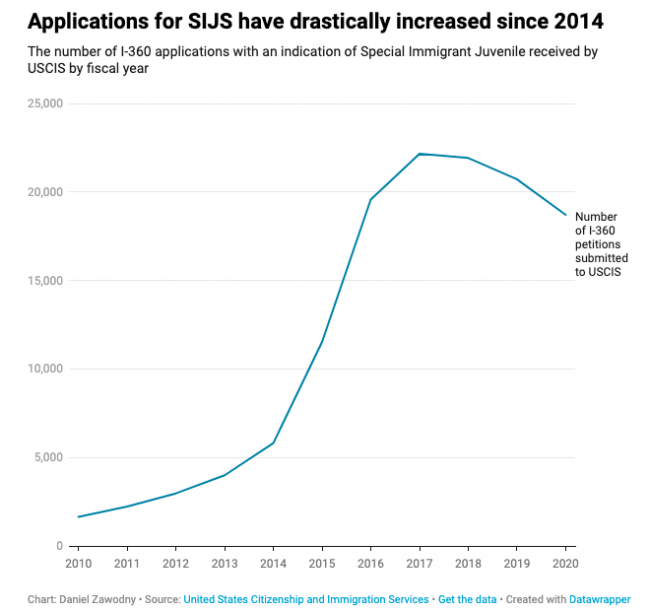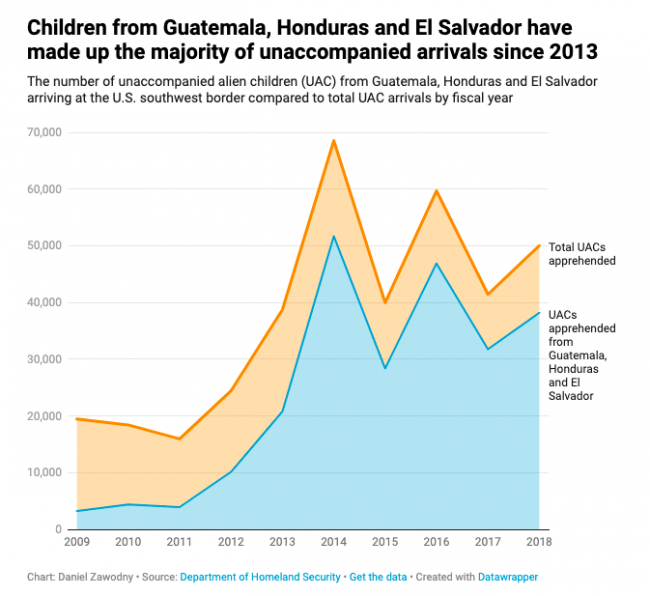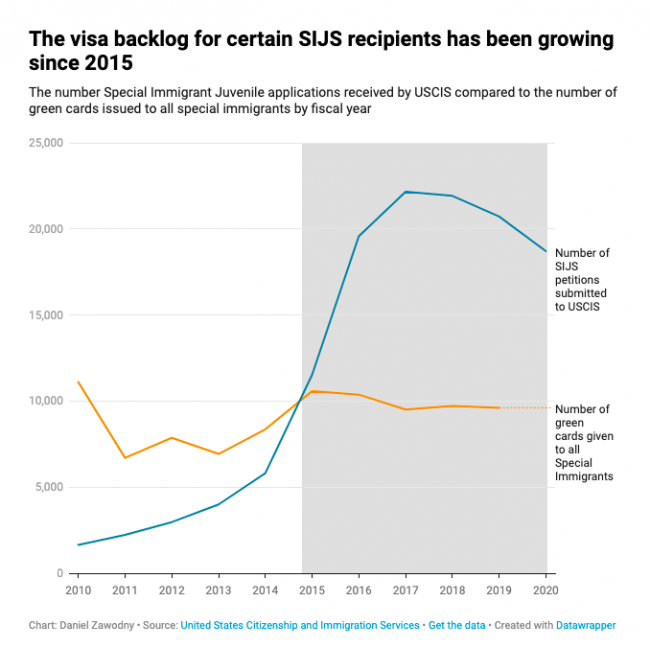
When Eli Ramos crossed the U.S.-Mexico border, he was 17 years old and thousands of miles from his nearest family member. Entering the country as an unaccompanied minor, he would spend the next two months at a shelter run by the Office of Refugee Resettlement. He received food, medical attention, and English classes as he waited for his uncle in Pennsylvania to undergo a federal background check in order to serve as his sponsor. Upon his release, immigration court date in hand, Ramos felt hope for the opportunities that the United States might afford him.
“Violence, no jobs, there just was no source of sustaining myself,” said Ramos, who had been living with his grandmother in rural Guatemala before making the journey north. With his parents absent from his life and his grandmother aging, he says that wanted to reunite with family that could better support him—uncles and cousins that were living here in the U.S. “You have to look for a way to move forward in life,” he said.
Ramos’s journey started in 2014. Now 24 years old, Ramos is still waiting on those opportunities.
Like thousands of other unaccompanied migrant children from Central America, Ramos qualified for Special Immigrant Juvenile Status (SIJS), a federal designation for certain immigrant youth meant to provide humanitarian protection to vulnerable kids.
As the number of applications has spiked since 2014, SIJS recipients from certain countries, including Guatemala, El Salvador, and Honduras, must wait in an ever-growing line before they see any immigration benefit like work authorization or protection from deportation. As the Biden administration doubled down this year on its goal of protecting unaccompanied migrant children arriving at the U.S. border, some lawyers and advocates say that administrative backlogs might keep them vulnerable for years to come.
Ramos reached the equivalent of 7th grade in Guatemala. He says that, like many other kids in his community, school sometimes took a backseat to helping sustain the family by working, often as a laborer in coffee fields. Once in the United States, he started in 9th grade and looked forward to finishing school.
“The first year was hard—trying to adapt to things, learn English, figuring out how to express myself to my teachers,” he said. “They would be explaining something, and sometimes I just couldn’t understand them.”
Before graduating, Ramos says that a U.S. Army recruiter approached him about joining the armed forces. He took an entrance exam and got excited at the prospect of, in his words, “the idea of being a protector.”
Unlike recipients of Deferred Action for Childhood Arrivals, or DACA, Special Immigrant Juveniles have a path toward permanent residency and citizenship. However, SIJS alone does not offer protection from deportation and work authorization like DACA does—recipients must wait until their turn for residency comes around. Without proof of status, Ramos said the recruiter wouldn’t let him move forward.
“I’ve just had to get used to having patience,” Ramos said.
The First of Two Courts
In order to qualify for SIJS, a child must first prove to a state family court that they have been “abandoned, abused or neglected” by one or both of their parents and that returning to their home country is not in their best interest. Before they can move forward with any immigration paperwork, first their adult sponsor, often the non-abusive parent, an uncle or other relative, must receive a custody or guardianship order from the state.
“I feel that on the state side of things, there’s a lot of unnecessary delay,” says Lydia Bobes, a former Baltimore public defender who has represented several SIJS applicants in state court. According to Bobes, between waiting for a response from the abusive parent(s), who by law must be served court documents even if they reside in the child’s home country or their whereabouts are unknown, and other administrative delays, the process can take anywhere from nine months to two years.
Ramos says he waited months for a Maryland family judge to verify what he had always known—that he had never met his father and that his mother did not provide adequate support and care for him. The court order states that it was in Ramos’ “best interest” to stay in the United States because “there is no place in Guatemala where the Minor Child could live where he would receive proper care and an education.”
“Most of these minors have experienced extreme trauma—they’ve been abused or neglected in their home country, they’ve had terrible journeys coming to the U.S., and even living in the U.S. when you dig into their stories, there are issues going on,” said Maria Colon, a Baltimore area immigration attorney. She says that in the three years that she worked at an area immigration legal non-profit, she had to refer most of her SIJS clients to their team’s social worker for help with other psychosocial needs.
Though not all SIJS recipients arrive at the U.S.-Mexico border as unaccompanied minors, many do. Of the more than 100 SIJS cases that Colon has worked on, she says that over 90 percent were minors who arrived at the border unaccompanied. Though it is widely assumed that unaccompanied migrant children will apply for asylum, Bobes and Colon agree that most are more likely to qualify for SIJS.
“Once you interview UACs, the form of (immigration) relief that you see the most is SIJS—it’s almost definite that they’ve been abused, abandoned, or neglected by a parent,” said Colon.
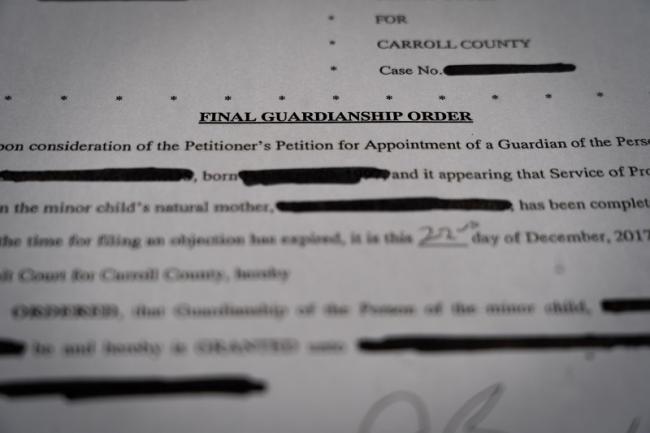
An Even Longer Limbo
From when she began working with an attorney to the date of the grant, it took Nayirian Rocha’s mother eight to nine months to gain full custody. Rocha has only met her father once—back in Nicaragua at the age of 10, years before political persecution forced them to flee home in 2018.
“In 19 years of life, he’s given me $50, nothing else,” she said.
Rocha could now enter the next phase of the SIJS process and show the custody order to United States Citizenship and Immigration Services (USCIS) as part of a formal Special Immigrant Juvenile petition. Federal law requires that USCIS adjudicate these petitions within six months of receiving them. Once granted, the government would still not recognize Rocha as holding official status. Because Congress created SIJS as a stepping stone towards permanent residency and, eventually, citizenship, it does not offer work authorization or a social security number itself.
Though she arrived in the U.S. four years after Ramos, she may become a permanent resident much quicker. According to the Department of State’s “visa bulletin,” Rocha is eligible for a green card as soon as her SIJS petition with USCIS is granted, but Ramos, from Guatemala, had a three-year waiting period.
According to an official from the State Department, the practice of releasing a monthly “visa bulletin” has existed since the 1960s. USCIS uses it to determine who is eligible for a green card each month, as they meter residency grants based on where an immigrant is coming from and whether they are receiving the visa through a family member or other means.
For a Special Immigrant Juvenile from Nicaragua, the current visa bulletin shows no line. For El Salvador, Honduras, and Guatemala, which are grouped together on the bulletin, USCIS is currently evaluating applications from November 2018.
USCIS received 1,646 SIJS petitions in fiscal year 2010. In 2019 they received 20,721. Data that breaks down the countries of origin of SIJS petitions by fiscal year is not publicly available.
“It [SIJS] was created by Congress to create a rapid pathway towards permanent legal protection for very vulnerable children, and the problem with the backlog is that it undermines that intent,” said Rachel Davidson, a New York immigration attorney and founder of the End SIJS Backlog Coalition.
Davidson and other advocates are rallying together religious organizations, legal providers, even state governments to push Congress to address the backlog issue because they say that it prevents SIJS recipients from living fulfilling lives.
“Not being able to progress in their lives, not having access to the kind of permanency that would allow them to grow, go to college, no access to financial aid, no ability to work and support themselves,” said Davison.
Ramos has lived this. Though he graduated from high school years ago, he hasn’t been able to get a work permit, forcing him to look for odd jobs that pay cash to help his uncle with expenses.
At the time of publication, USCIS did not make available how many SIJS recipients from Northern Central America may be stuck in the visa backlog nor offer a comment on the issue. Some advocates estimate that it is at least 20,000.
The visa bulletin groups all “special immigrants” into the same “employment based” category, meaning that SIJS recipients share a spot in line with some religious workers, NATO employees, Afghan or Iraqi translators, among others. In 2019, the most recent year with publicly available data, USCIS issued just 9,609 green cards, less than one percent of the total number issued, to all “special immigrants.”
“It seems like a grab bag a little bit, as if Congress didn’t anticipate that there would ever be a backlog,” said Rebecca Scholtz, a senior attorney with Catholic Legal Immigration Network (CLINIC).
Applicants from the same country cannot receive more than seven percent of all the green cards available in any one category. Even if all other Special Immigrants that may be from Northern Central America did not apply for green cards, a maximum of 673 SIJS recipients from each of those three countries could have become lawful permanent residents that year.
According to USCIS’ website, even after an applicant submits for their green card, it could take more than a year to receive an approval.
“This status...is supposed to happen quickly,” said Davidson. “But the fact that it’s an employment-based visa undermines the whole protective purpose by allowing young people to sort of be in limbo.”
No Safety Net
According to Syracuse University’s TRAC Immigration Project, as many as 55 percent of minors went before an Immigration Judge without an attorney between fiscal years 2005 and 2021. Though data is unavailable, according to former Baltimore Immigration Judge Lisa Dornell, the number of minors unrepresented at their first appearance before a judge is likely more jarring.
“I would have entire dockets of first appearances, and inevitably 98 percent of them would not be represented,” she said.
According to Colon, at their first appearance before an immigration judge, or “master calendar hearing,” most minors who might qualify for SIJS would not yet have had a chance to apply. They would rely on the discretion of the immigration judge to rule to continue their case, scheduling a later court date that would allow them the chance to seek legal counsel.
After getting an approved petition from USCIS, SIJS recipients must wait to reach the front of the line for a green card for the immigration judge to completely close their case with the court. This was not always true—even just a few years ago, a minor could ask to have their case closed much sooner.
“[Before], DHS (Department of Homeland Security) was definitely collaborating more with attorneys and getting cases terminated. When I began working in immigration [in 2017], that wasn’t an option. There was definitely a shift in the practices in immigration court with the change of administration,” Colon said.
Dornell agrees, she says that former Attorney General Jeff Sessions and other members of the Trump administration started changing rules once they got into office.
A respondent before the Court may ask for continuance, or postponement, on their case for several reasons. For SIJS cases, the practice has grown increasingly common as the backlog forces minors to wait longer before a green card is available. Dornell says that the Trump administration pressured immigration judges to cut back on the practice and to stop administratively closing cases that had pending approvals from USCIS.
“Why are we going to pack a courtroom full of people who are saying the same thing? ‘we’re waiting for the visa number to become current.’ Just before I left...I was told I had to move a great number of my cases back onto my active docket,” said Dornell.
In an emailed statement, a Department of Justice official maintains that Immigration Judges can exercise “independent judgement and discretion” on all cases.
“The Trump administration made continuances harder on a number of levels,” said Scholtz, Senior Attorney at CLINIC. She points to a 2018 ruling by former Attorney General Sessions that states, “the overuse of continuances in immigration courts is a significant and recurring problem.” According to Dornell, when continuance is no longer viable, often the only option left is removal—a deportation order.
“The Attorney General put emphasis on a number of factors, which was his prerogative. but efficiency in my courtroom would never overtake the importance of due process of law,” said Dornell. She stepped down from her position after 25 years on the bench due to what she says were mounting pressures on her judicial independence.
Davidson, attorney and organizer of the End SIJS Backlog Coalition, doesn’t think that an administrative backlog should keep people like Ramos and Rocha vulnerable to the possibility of deportation.
“It’s not a vetting process; it’s a waiting process,” she said. “We’re talking about kids that have gone through a rigorous process in a state court...and then they send an application to the federal government...they’ve been twice vetted.”
During their prolonged proceedings, Colon says that even minor criminal issues can drastically affect how a minor’s case turns out and lower the likelihood that they receive a green card.
One of Colon’s clients, a Guatemalan boy named Brandon, received SIJS at the age of 13, faced an order of house arrest after a Maryland judge convicted him of assault and possession of a weapon. Days before his release from juvenile custody, Colon says that Immigration and Customs Enforcement (ICE) detained Brandon on gang charges after police from Frederick County, Maryland tipped them off to his release.
Frederick Police allege he is part of MS-13. Colon says that Brandon maintained that the incident was just a fight with another kid and that he continuously denied any involvement with the gang. She says that his residency application was pending at the time of his arrest.
Brandon spent the next two and half years in ICE custody as Colon appealed his case. He was eventually transferred to a detention center across the country in Washington where Colon could no longer represent him.
“There was a complete disregard of due process during his whole immigration proceeding,” said Colon, who thinks the case would have gone differently had Brandon already been a green card holder.
Alice Song Hartye, the Judge presiding over Brandon’s case, was appointed to the York, Pennsylvania Immigration Court in 2018 by former Attorney General Jeff Sessions. A Department of Justice official responded to an emailed request to speak with her stating that, “Immigration Judges do not give interviews.”
According to Colon, Brandon never expressed fear of returning to Guatemala during his initial SIJS process. But that changed after his arrest and they ended up also filing an asylum application, a separate form of immigration relief for people who fear persecution in their home country. Colon says that because the police’s allegations of his gang membership went public, his life would now be at risk whether or not they were true.
Colon recently received news from Brandon’s attorney in Washington that he was deported to Guatemala in March of this year. His residency and asylum applications were still pending.
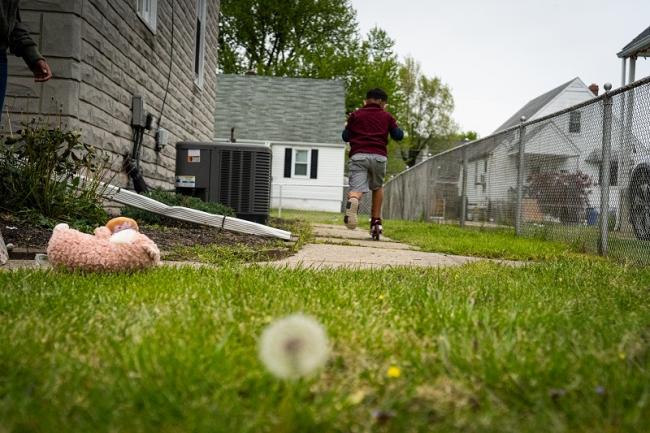
Waiting
Frank met with an attorney for the first time in Aug 2020. Or rather, his mother did, as Frank is just seven years old. He and his aunt, who was 14 at the time, arrived in March of that year, mere days before Covid-19 would dramatically change the border. The pair were processed as unaccompanied minors arriving together and reunited with Frank’s mother in Baltimore.
“I’m overjoyed to have them both with me here,” said Frank’s mother, Sindy, whose last name has been omitted at her request. “Nowadays it’s almost impossible to live in our country.”
According to Frank’s attorney, Diana Rodriguez, Frank qualifies for SIJS and should be a straightforward case. His petition for SIJS could be the family’s first successful immigration application. Sindy says that she came to the U.S. in 2014 with her oldest daughter, Frank’s sister, with the intention of applying for asylum, but because of one missed court date she has missed her opportunity. Barring a Congressional change to immigration law, Sindy knows that she may be out of options.
The same isn’t true for Frank, his aunt Cesia, and sister Belsis. However, first they will face a bout with the backlog. As minors from Honduras, once they complete the Maryland Circuit Court process and Sindy receives legal authority to help them apply for SIJS, it could still be years before they become legal permanent residents.
For Cesia, who is 15 and dreams of becoming an engineer, it could be years before she’s granted authorization to get a job or could qualify for a student loan, which could mean putting off college.
Davidson, founder of the End SIJS Backlog Coalition, says that the group has discussed the backlog problem with members of Congress. She hopes that legislation will pass that either takes SIJS recipients out of the employment-based visa line or grants them benefits like work authorization and protection from deportation while they wait.
Immigration attorney Colon thinks that unless the issue is addressed soon, the backlog will only grow. Although not all unaccompanied migrant children will qualify for SIJS, Colon and other attorneys speculate that many will.
“If projections about the number of arriving [unaccompanied] minors become true, we could see an even greater backup in the number of visas available to SIJS recipients. It’s kids from the Northern Triangle; that’s where the holdup is, and that’s where all the kids are coming from,” she said.
Though she’s seen it cause resignation in some of her clients, Davidson thinks that the prospect of waiting in the backlog doesn’t shake the faith that the majority of SIJS recipients have.
“It’s constantly shocking to me how much faith these young people have in the United States...that this government wants to protect them and it’s going to be okay, that this is the status for them and that it’s going to happen,” she said.
Daniel Zawodny is an immigration paralegal and freelance journalist based in Baltimore, Maryland. He recently graduated with his MA in journalism from American University.

